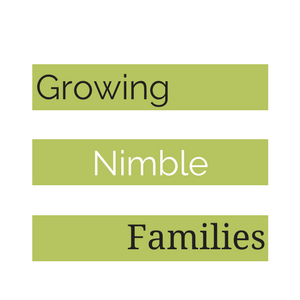Here is the Fifth in a series of articles written by the multi-talented Elaine, an Occupational therapist from littlesheeplearning.co.uk . Elaine also writes a blog
. Elaine also writes a blog  that has news from Littlesheep Learning and the wider world of [tag]education[/tag] and [tag]learning[/tag]. She is also featured in the free play-activities.com
that has news from Littlesheep Learning and the wider world of [tag]education[/tag] and [tag]learning[/tag]. She is also featured in the free play-activities.com daily [tag]play[/tag] activity emails.
daily [tag]play[/tag] activity emails.
[tag]Sensory play[/tag] an introduction
Future: Sensory play 6 Touch
Of all the areas of sensory play the sense of taste is probably the most neglected when it comes to exploration. Using mouths to explore is a natural part of a [tag]babies[/tag] [tag]development[/tag] which can be developed into different activity ideas for older [tag]children[/tag]
To encourage experimentation with flavours let your child help you cook; research shows that children who help cook are more likely to try new dishes. Some fun easy [tag]cooking ideas[/tag] are icing biscuits and cakes, making popcorn and muesli (mix up favourite cereals and dried fruit). Children will enjoy choosing their favourite pizza toppings, fruits to make smoothies, vegetables for a stir-fry or fillings for a jacket potato or sandwich.
Play [tag]taste games[/tag], gather up different foods with a variety of flavours cover the children’s eyes and let them taste the food. Discuss whether they like or dislike it, what it tastes like, is it sweet, sour, salty, fruity, spicy, hot or cold? Can they guess what it is or what it is made from? Similarly put different drinks, for example apple, orange, grapefruit, grape, cranberry, pineapple, tomato, milk and water in cups and see if your child can distinguish between them.
A craft idea to incorporate tasty play is to use hoop cereals or crisps to make necklaces to taste later. Older children could use a needle and thread to make chains of dried fruits or sweets.
Another idea to incorporate taste into play and learning is to use food as the medium. Small food items, for example raisins, cereal loops, and sweets are great to use as counters when practicing counting or doing arithmetic (and can be eaten as a reward at the end!). Edible alphabets, for example an “a” shaped out of apple, a “b” made from banana, a”c” made of crisps and a “d” made of donuts can help the understanding of phonics! Can you find tastes in a rainbow of colours?
Taste is probably the hardest sense to incorporate into play, however, with the inclusion of cooking activities the scope is limited only by your [tag]imagination[/tag]!
Elaine Lambe
Educational consultant
 Elaine trained as an [tag]Occupational Therapist[/tag] before working with children with autism on home based [tag]early intervention[/tag] programmes. Through her work in the home she helped parents to support their child’s learning, implemented behaviour plans and assisted with teaching self help skills for example toilet training, self-feeding and dressing. She has also had experience of supporting children with [tag]special educational needs[/tag] in mainstream schools, adapting the curriculum to make it accessible to them. After the birth of her first child, Elaine started Littlesheep Learning – www.littlesheep-learning.co.uk – an online store with an ever-growing range of teaching and learning materials for everyone who wants to help their children reach their potential.
Elaine trained as an [tag]Occupational Therapist[/tag] before working with children with autism on home based [tag]early intervention[/tag] programmes. Through her work in the home she helped parents to support their child’s learning, implemented behaviour plans and assisted with teaching self help skills for example toilet training, self-feeding and dressing. She has also had experience of supporting children with [tag]special educational needs[/tag] in mainstream schools, adapting the curriculum to make it accessible to them. After the birth of her first child, Elaine started Littlesheep Learning – www.littlesheep-learning.co.uk – an online store with an ever-growing range of teaching and learning materials for everyone who wants to help their children reach their potential.
![Reblog this post [with Zemanta]](https://img.zemanta.com/reblog_e.png?x-id=c0a94680-159e-4bb4-a27e-05facf55b070)











[…] Sensory play 5 Taste […]